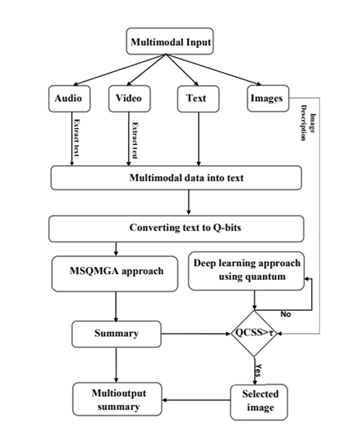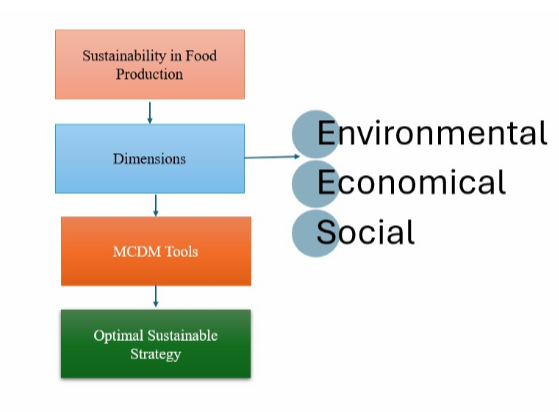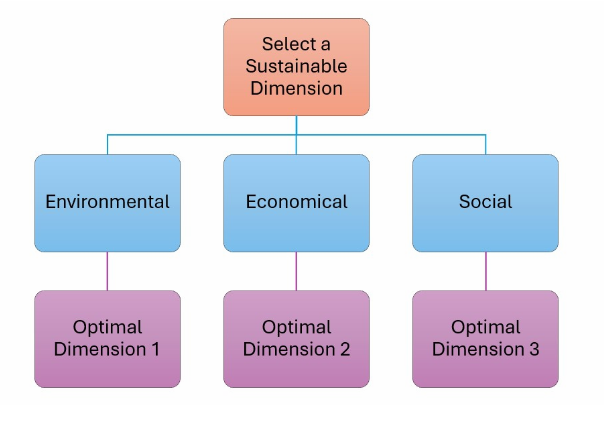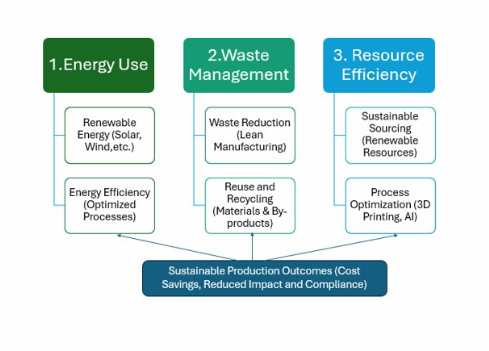Recent News
- Quantum-Inspired Multimodal Summarizer: A Breakthrough for the Information Age June 13, 2025
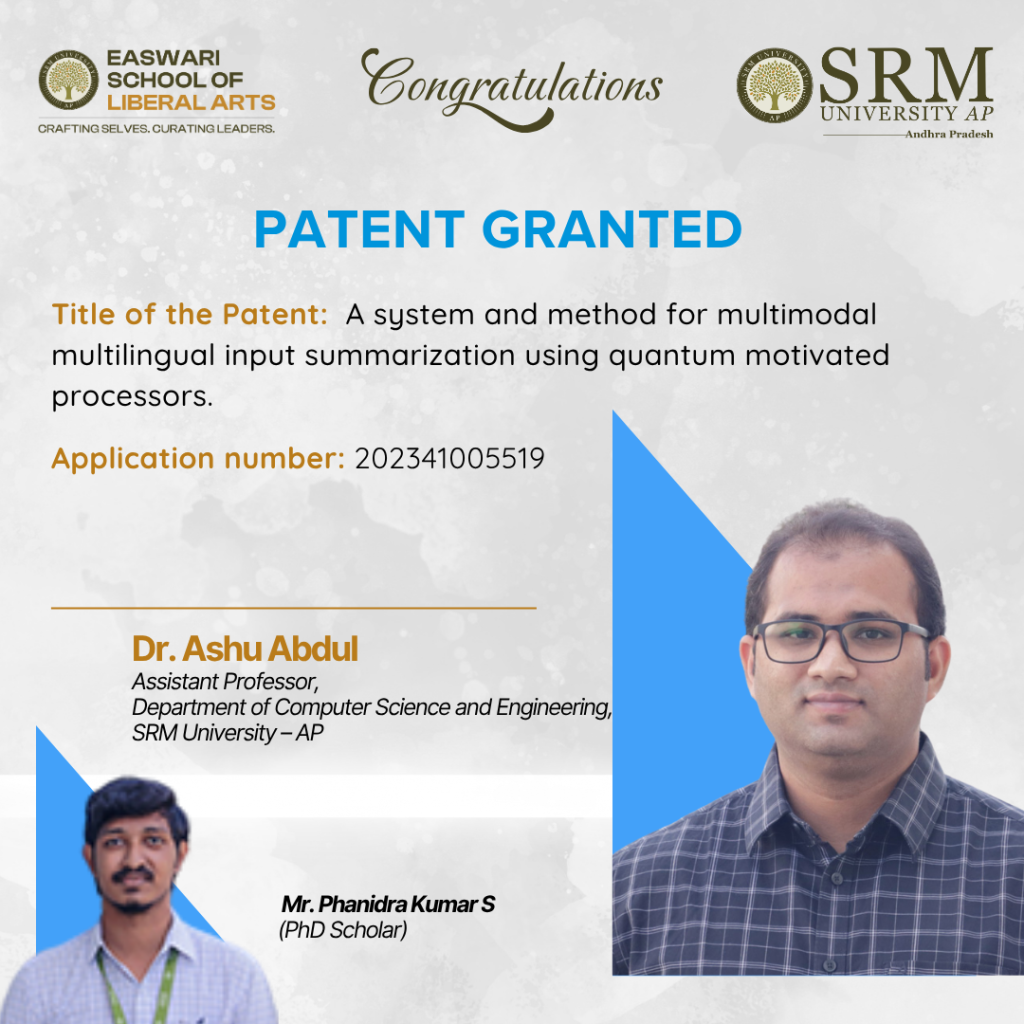
The digital age is flooded with multimedia content ranging from articles and podcasts to videos and images, spanning multiple languages. The challenge isn’t just accessing information but understanding and summarising it efficiently. Addressing this need, a pioneering patent titled “A System and Method for Multimodal Multilingual Input Summarization Using Quantum Motivated Processors” (Application Number 202341005519) has been granted to Dr Ashu Abdul, Assistant Professor in the Department of Computer Science and Engineering, and Mr Phanidra Kumar S, PhD Scholar, as published in the Indian Patent Office Journal. This innovative system converts all kinds of media like text, images, audio, and video into descriptive text, then leverages quantum-inspired algorithms to extract and stitch together the most relevant sentences and visuals, thereby crafting a perfect summary.
Abstract
This research details a system and method for summarizing multimodal and multilingual input data by leveraging quantum-motivated processors. The system is designed to handle input documents comprising text, audio, image, and video data, potentially in multiple languages. A pre-processing engine extracts textual descriptions from all these modalities (using deep learning, CNN, VAF, Python), merging them into a unified text corpus. A quantum enabler module assigns initial probabilities and encodes sentences from this corpus into binary states (0s or 1s), reflecting a quantum measurement concept (using randint). A selection module, utilizing an objective/fitness function incorporating factors like term frequency, sentence length, pronoun presence, coverage (QCSS-based similarity), and title relevance (Sentence-to-Title QCSS), calculates a fitness score for each encoded sentence and shortlists relevant ones using a “radiant function”. This module also handles duplicate removal based on QCSS. A rearrangement module scores and reorders the shortlisted sentences based on metadata (like publishing date) and scores (like ROUGE). A summary generation module produces a textual summary. Concurrently, an image selector engine selects a relevant image from the input data, primarily based on the image’s textual description and the generated summary, often using QCSS (Quantum Cosine Similarity Score). Finally, an output engine merges the textual summary with the selected image to create a multioutput (MO) summary. The system may also include a machine translation engine to translate non-English extracted descriptions into English before summarization, if needed. The approach employs quantum measurement and adaptive quantum rotation gates within an evolutionary framework (suggesting a Quantum Genetic Algorithm approach, referred to as MSQMGA) to find optimal summary sentences, demonstrating improved performance and efficiency compared to traditional Genetic Algorithms.
Practical Implementation of the Research
The system’s design outlines a modular architecture suitable for software or hardware implementation, involving distinct processing engines (Input, Pre-processing, Quantum Enabler, Selection, Rearrangement, Summary Generation, Image Selector, Output, and potentially Machine Translation). Key technical details include:
- Pre-processing: Use of Python, deep learning models (VAF, CNN) for extracting textual descriptions from audio/video/image data.
- Quantum Enabler/Selection: Assignment of initial probability (1/√2), encoding via a randomized quantum measurement model (randint(0,1) <= alpha_i), fitness function incorporating multiple weighted factors (fs = [0.75 * ((w1) * C * + w2 * pn * Ts) + 0.25 * S1] * Tf), QCSS for similarity checks (summary-to-document, sentence-to-title, intra-sentence, image selection), shortlisting via a radiant function, duplicate removal via QCSS.
- Rearrangement: Sorting shortlisted sentences based on metadata like publishing date and ROUGE score.
- Image Selection: Deep learning models like QTL-based CNN-LSTM, thresholding (e.g., 0.85).
- Multilingual Handling: Explicit mention of a Machine Translation Engine (122) to translate non-English extracted text into English
- Performance: Claims of achieving ROUGE-1 scores (e.g., 0.78) and QCSS scores (e.g., 92% for image ID), and being “quite faster” compared to traditional GA approaches.
- Datasets: Evaluation conducted using DUC 2005, DUC 2007, Indian Express datasets for text summarization, and Flickr 8k, Flickr 30k, Indian Express datasets for image description (ID).
These specifics suggest practical implementation could involve developing software modules that utilize libraries for deep learning (e.g., TensorFlow, PyTorch with CNN, LSTM components), natural language processing (e.g., NLTK, spacy for tokenization, POS, lemmatization), and potentially frameworks for simulating or interfacing with quantum-inspired algorithms. The “real-time applications” aspect implies design considerations for efficiency and processing speed. Potential deployments include news aggregation platforms, content management systems, competitive intelligence dashboards, cross-cultural communication tools, or applications for analysing vast archives of mixed-media data.
Social Impact
Beyond basic information access, this technology has the potential to foster greater understanding and reduce bias by providing summarized content across linguistic and cultural divides. It could empower individuals and organisations to consume and analyse global information landscapes more effectively. For educators, it could facilitate the creation of multimodal learning materials from diverse sources. For researchers, it could accelerate literature review across different fields and languages. However, it also raises potential implications related to the source and neutrality of the summarisation models themselves – whose perspective is encoded, and how might summaries differ based on training data or algorithmic biases? Ethical considerations around information representation and potential manipulation of summaries would be important as such technologies become more widely adopted.
Future Research Plans
Although the patent doesn’t explicitly list a roadmap, the detailed description and stated advantages imply several potential future research directions and refinements based on the current work:
- Algorithmic Refinement: Further optimizing the “quantum-motivated” genetic algorithm (MSQMGA) framework, including the fitness function weights (w1, w2 are mentioned as trainable parameters), the “radiant function” for shortlisting, and the quantum measurement mapping.
- Modality Integration: Enhancing the pre-processing and integration of information from different modalities, potentially exploring more sophisticated methods for cross-modal semantic understanding beyond extracting textual descriptions.
- Cross-Lingual Capabilities: Improving the multilingual summarization accuracy, potentially integrating more advanced machine translation techniques directly within the summarization process or extending the quantum-motivated selection mechanism to handle multi-language sentence comparisons natively.
- Quantum Hardware Exploration: Investigating the feasibility and performance benefits of implementing parts of the system, particularly the quantum enabler and selection modules, on actual quantum computing hardware as it matures, moving beyond the current “quantum-motivated” (inspired/simulated) approach.
- Scalability and Real-time Performance: Further developing the system to handle even larger volumes of multimodal, multilingual data efficiently for true real-time applications.
- Evaluation and Benchmarking: Expanding testing on a wider range of diverse datasets and benchmarking against more varied state-of-the-art multimodal and multilingual summarization techniques.
- Summarization Quality: Focusing on subjective quality metrics of the generated summaries, such as coherence, readability, and conciseness, in addition to objective metrics like ROUGE
- Image Selection Enhancement: Refining the image selection process, potentially considering factors beyond just textual description and summary similarity, such as image quality, saliency, and contextual relevance within the broader multimodal input.
- Blockchain and Analytical Hierarchy Process (AHP) in food systems June 9, 2025
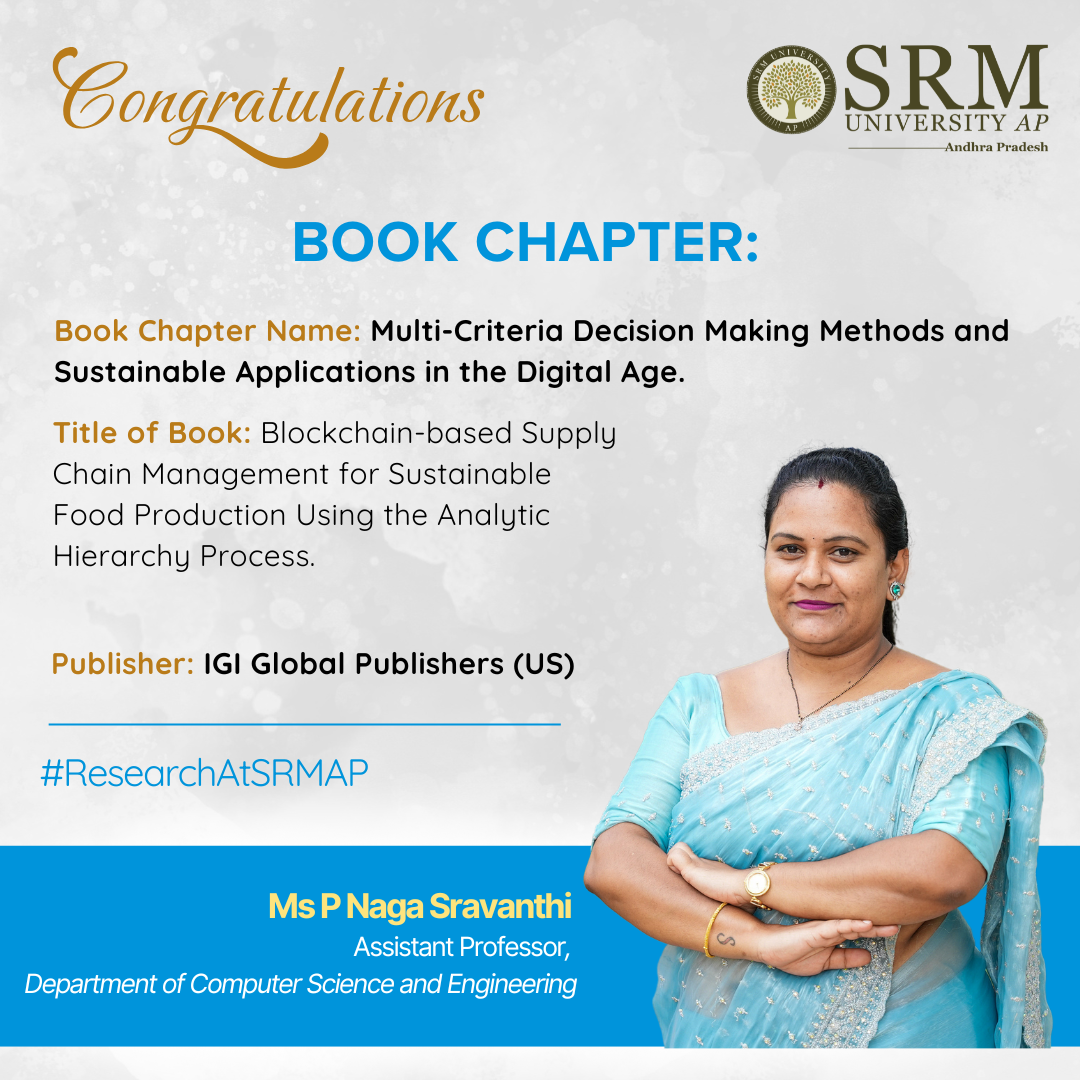 Have you ever questioned whether the food on your plate is truly fresh—or where it was grown?
Have you ever questioned whether the food on your plate is truly fresh—or where it was grown?The efficiency of our food supply chain is often undermined by challenges such as limited traceability, poor communication, and rising labor costs. These disruptions can lead to food safety concerns, spoilage, and increased costs. Hence there’s a growing need for better tracking and transparency throughout the entire supply chain.
Addressing these issues, P Naga Sravanthi, Assistant Professor in the Department of Computer Science and Engineering, published a chapter titled “ Multi-Criteria Decision Making Methods and Sustainable Applications in the Digital Age” in the book Blockchain-based Supply Chain Management for Sustainable Food Production Using the Analytic Hierarchy Process (AHP) by IGI Global Publishers (US).
The chapter explores how blockchain can be incorporated into the food supply chain and used to track every step of the food journey. The Analytical Hierarchy Process (AHP) helps assess critical metrics like quality, cost, or environmental impact. AHP provides a transparent platform to improve food systems and make sustainable choices for all stakeholders, including farmers, sellers, and consumers.
Abstract:
This chapter discusses how blockchain technology can build transparent and trustworthy food supply chains. It combines blockchain technology with the Analytic Hierarchy Process (AHP), a structured method to rank and prioritise sustainability goals, including reducing waste, ensuring freshness, and supporting local farmers. This approach guides food producers in making smarter, eco-conscious decisions, helping them align with global sustainability goals while improving production and distribution efficiency.
Societal Impact:
This research can make a massive difference in the real-world scenario. Farmers can trace their products, suppliers can avoid fraud, and customers can get safe and fresh food. It also supports small-scale producers by giving them a voice in the supply chain. Governments and companies can use this system to ensure sustainability, reduce food loss, and build public trust in food safety and fair trade.
Future Plans :
Looking ahead, the goal is to test this blockchain-AHP model in farm-to-fork supply chains, especially in rural or emerging markets. Collaborations with agricultural cooperatives and food tech startups are in progress. Machine learning will also be integrated to improve real-time decision-making. Future research will focus on policy frameworks and community-based blockchain adoption to expand its impact on sustainable food production.
Continue reading →


